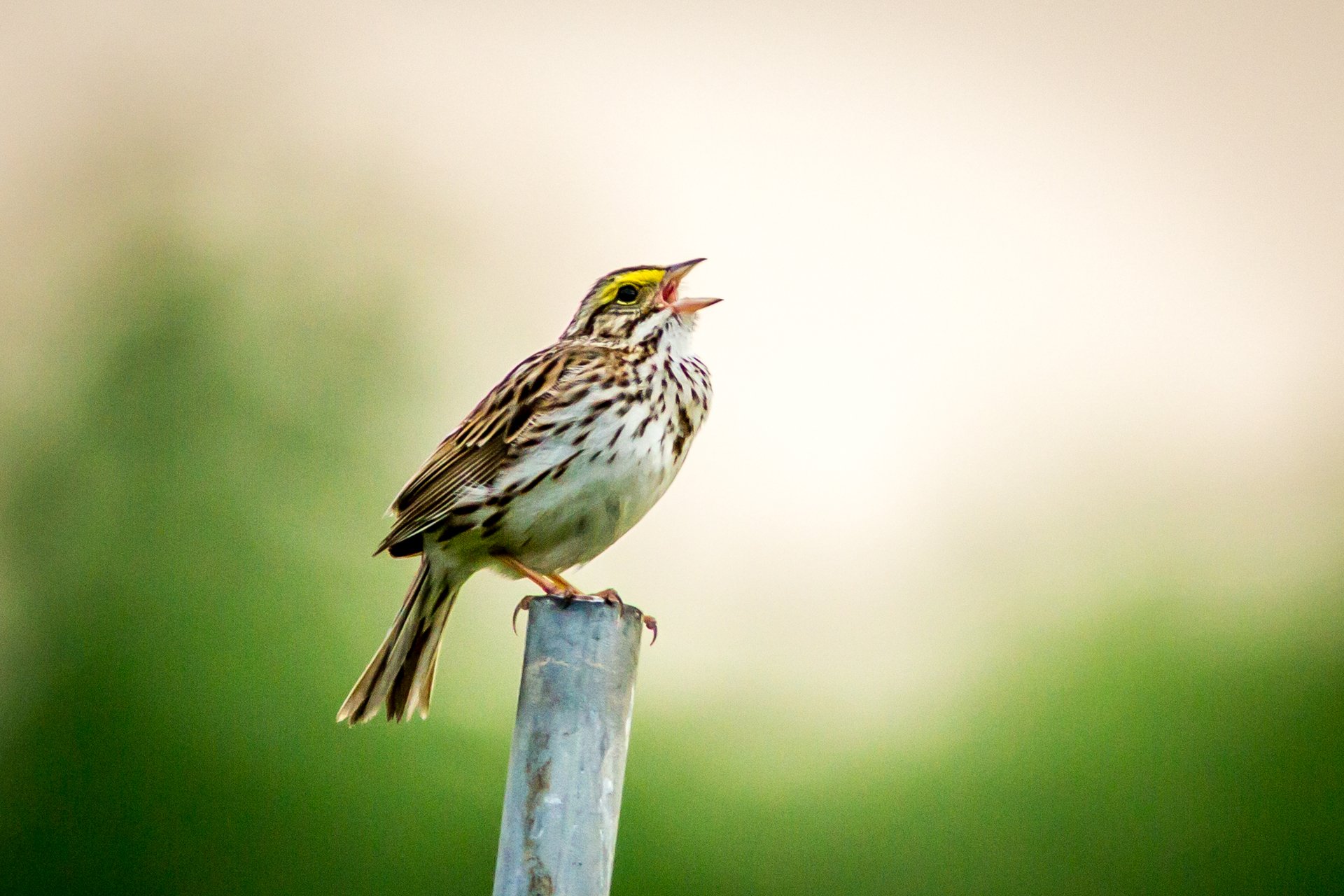Bird Songs vs Bird Calls
Birds make a wide variety of noises. You may recognize harsh cow caws, shrill screechs from hunting hawks, and the ethereal fluting of a thrush. Bird sounds are hard to categorize, but for simplicity, birders and guides often call them bird songs and bird calls.
But what’s the difference between a bird song and a bird call, and which birds use what sounds?
Bird Songs
A bird song is a noise that a bird makes with a specific function, almost always one related to mating. Birds may sing to attract mates, ward off rivals from their territory, or bond with their mates and young. Songs tend to have a definite structure and rhythm. They are often repeated over and over again—sometimes with variations, but usually on a single theme.
Birds that sing usually breed in areas where visibility is low, like dense forests or jungles, tangled shrubland, or open meadows with tall grasses. Sounds make for a much more reliable signal than visual cues in these environments.
Birds that breed in open high-visibility situations, such as lakes, beaches, and rocky islands, have little use for bird songs. This is why you will seldom hear of a heron, duck, or cormorant “song.”
On the other hand, many sounds that might not sound musical to us are technically songs by this definition. For example, the deep, resonant "who cooks for you?" hooting of the Barred Owl is one example.
Bird Calls
A bird call, on the other hand, is much more flexible in its usage. Many bird calls are short notes or phrases that birds use to convey everyday concepts. For example, a robin’s tut, tut means “danger is near,” and a Canada goose’s honk while migrating means “follow me!”
Many mother birds will use short chirps to keep tabs on their young while foraging together. They keep a constant chorus of “where are you?” and “here I am!” so they don’t get separated.
Some birds have calls that not only warn others of danger but also have different alarm calls for different predators. The very flexible chick-a-dee-dee call given by Black-capped Chickadees can be used to communicate danger, and some research suggests that the number of dee notes increases in proportion to the danger of the perceived threat.
Many bird species have both a song and several calls, and some birds sing multiple songs. Most birds sing primarily during breeding, but many birds will sing during spring migration.
Start Listening to Birds
It may be called birdwatching, but bird listening is an essential skill for any birder and adds a richer layer of information to observations. Listening to bird noises, including calls, songs, and even drumming provides helpful clues to identifying birds.
Apps like Merlin the Audubon Bird Guide can help you identify birds in the field. Mass Audubon also regularly hosts programs devoted to identifying birds by sound alone. Familiarize yourself with the birds in Massachusetts and beyond, then get outside to see if you can distinguish which is which.
Upcoming Birding Programs
See MoreBird Research in Action!
-
Wellfleet Bay Wildlife Sanctuary, South Wellfleet
-
Friday, April 26
9:15-10:15am
Adults & Families - 8 & up
Friday Night Speaker Series - Tracking Kestrels With Radio Telemetry
-
Wachusett Meadow Wildlife Sanctuary, Princeton
-
Friday, April 26
6:30-8:00pm
Adults
Saturday Morning Birding in Essex County
-
Osgood Hill, North Andover
-
Saturday, April 27
8:00-10:00am
Adults
Stay Connected
Don't miss a beat on all the ways you can get outdoors, celebrate nature, and get involved.



